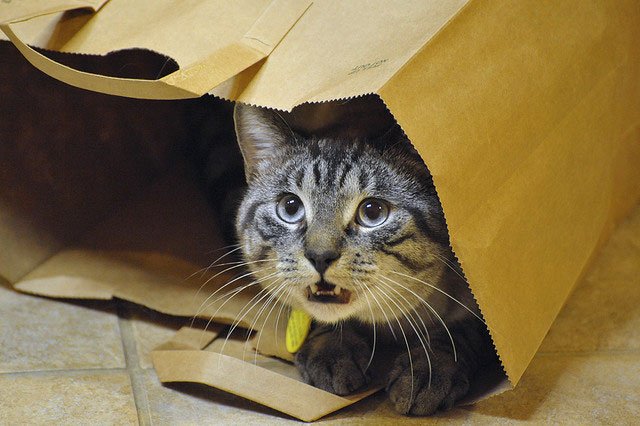
An American veterinarian, Dr Weitzman, claims to have decoded the feline language (come on Dr. we know already 😉 ). Gary Weitzman believes that each cat has more than a dozen vocalisations, each of which maintains a fixed meaning for the individual cat. He set out his theories in a book called How to Speak Cat.
Cat meows are solely used for talking to humans because each cat communicates with each other through body language. Each meow is different for individual cats. This is not entirely true because kittens make vocal communications with their mother. Also cats hiss and make other aggressive sounds towards each other under antagonistic situations.
Dr Weitzman confirms what we have already learnt namely that “cats only vocalise to people” but as stated this is generalising.
“There are probably one or two dozen different vocalisations per cat that we would classify as ‘meow‘. However, you couldn’t get Webster’s dictionary or a Fodor’s translation cat-to-English or English-to-cat and define those meows, because they’re individual for every single cat.”
He says that there are crucial differences between how dogs and cats communicate. Dr Weitzman has written another book entitled How to Speak Dog.
People who care for both cats and dogs will not be surprised at the different way cats and dogs communicate through vocalisations.
“We can train both species – but, for the most part, we train dogs to respond to what we want them to do,” he said. “Cats, on the other hand, actually train us to respond to what they want us to do. [The] meow vocalisations mean specific and consistent things – the favourite being the 4:30 am ‘gimme breakfast’. You will actually be amazed by how consistent [the language] is.”
However, not all cat communication through vocalisation is so specific to the individual. Dr Weitzman remarks that there are some well-known signals which remain the same between cats. Most of us know the “tail up” body language communication which is described as a “how do you do?” sign. It is a friendly greeting; almost a smile and a handshake.
Most of us who are experienced cat owners know about the slow blink which Dr Weitzman claims represent “affection and acceptance and is really quite a gorgeous, subtle, physical movement that they do to show that they’re comfortable with us.” This one we definitely know about and it is an example of feline body language which we love to see.
I’m pleased to note that Dr Weitzman wants to challenge the stigma of the “crazy cat lady”. He also wants to demonstrate that anyone who thinks that cats are aloof animals who use people for their own ends is incorrect. The fact that they vocally communicate with us proves it.
How will you know that they value humans as more than just servants to meet their own hands? Dr Weitzman advises us to look for certain key meows. A frequently used one he said is “feed me breakfast”. Then there’s “play with me”. A guaranteed sign of feline affection towards you is: “I want to go out.”
Here are some examples of how to speak cat (tongue in cheek) – I am not sure whether these fun examples come from his book or the Times journalist from which I have based this article:
Meugh “I have sicked up part of a chaffinch on the guest duvet.”
Meouigh “Please give me better food, or I will move to the student house where they let me clean their dishes.”
Meow “I have had Congress with the feral Tom. Your husband is right; you should have had me spayed.”
Meowmeow “I will now pretend to like you in order to obtain food. You are an idiot.”
Meeeeeow “I have dug a small hole in the cat litter tray in order to hygienically burry my waste. There is now cat litter all over the kitchen.”
Meooooow “I wish to scratch something. Would you mind awfully if I went to the antique dining table?”
These are fun examples but a genuine meow might mean, “Hello, it is tolerable to see you, I suppose – please take this eviscerated mouth of the side of my affection.” Once again this is a bit of fun but we do know that meowing is a specific vocal communication designed to communicate with humans to make a request.


Sorry for that. PoC is not up to FB tech standards.
Oh Boy, I found another serious error; I must be typing too fast for my brain to catch up.
I meant to say that this book has nothing that most of us don’t already know!
I meant Humane Society. Too bad there’s no way to edit our errors!